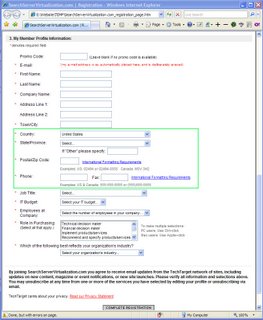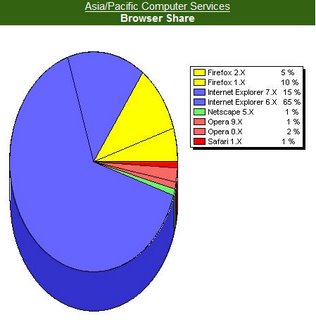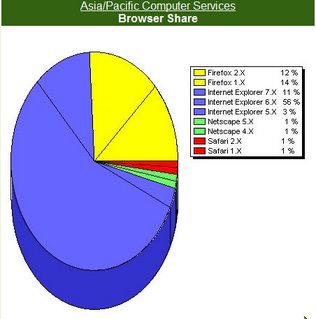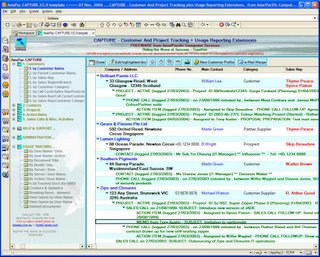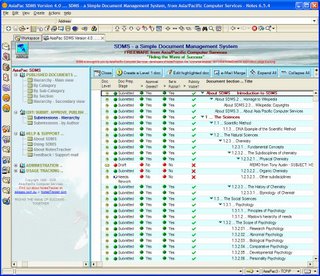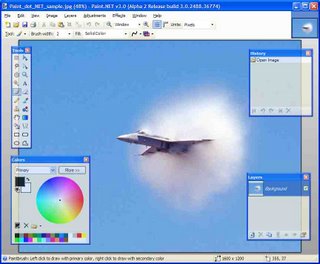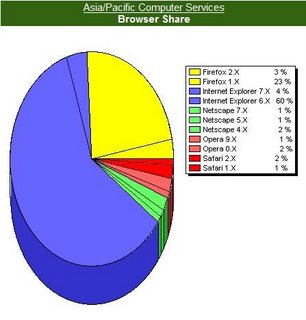Bill
Buchan has a handy tip on configuring multiple Lotus Notes clients to run on a single workstation, which prompted me to add my own tips on this topic.
This is goodness for those of us (developers, consultants,
ISVs, administrators, Help Desk staff, testers, etc) who need to support multiple customers/users running IBM Lotus Notes/Domino at different release levels.
I've been using a similar set-up for many years too. It seems to work quite well, without the considerable overheads and slowdowns that ensue if you choose to install them using a
virtualization approach (say, using
VMware or Microsoft Virtual PC).
In the following, I'm assuming that "Notes" -- by which I meant the Lotus Notes client, the Lotus Domino Designer, and the Domino Administrator client, rather than the Domino Server -- are being used in a Microsoft Windows environment. This will be the majority (and will probably remain so for quite a few years).
There's a caveat that Bill didn't mention: if you're working on an application that relies upon Windows OLE/COM (say, to interact with and update fields in a Microsoft Word or Excel document) then you can only expect the most-recently-installed version of Notes to behave properly. This is because each successive Notes installation will make changes to the dreaded Windows Registry, such that the only reliable access to the OLE/COM classes will be via the most recent Notes installation.
The versions of Notes that I currently have installed on my main development machine are R5.0.11 and R6.5.4 and (as of a few weeks ago) R7.0.2. (I've only recently decided that it's fairly safe not to bother with actively supporting Notes R4, otherwise I'd have installed R4.6.4 as the very first one. I know of a few places still on R5. Surely there aren't any still on R4?)
I was careful to install them in increasing release number sequence: 5.0.11 followed by 6.5.4 with 7.0.2 being the final install. Naturally, they're all installed in their respective separate Notes and Domino directories.
TIP:My main reason for writing this article is
that there's a check done early in the R6 installation process -- related, I think, to the "multi-user install" option that first appeared with R6.0 -- which can prevent you from installing such consecutive releases on a single system. (Note that, as per Bill's tip, they're all going into separate directories.)
For related background info, including the multi-user support (against a single Notes release) and "roaming user" capabilities, see the following IBM support articles: Unable to Upgrade 4.x or 5.x Single-user Install to a 6 and Is a Multi-user Installation of Notes/Domino 6.x Needed as well as Where is the option for a Multi-user Install of the Notes Client? and also Error: 'You are attempting to upgrade a multi-user installation' when upgrading to a single-user install. There's also the IBM Redbook Upgrading to Lotus Notes and Domino 6 -- download the PDF (or the online HTML edition) and examine Chapter 16.1.2 Multi-user workstations in particular.
Now, you might have arrived at this particular blog posting after doing a search for "Notes and multiple" or something like that. So just to make it crystal clear, I'm not here intending to discuss the ability for multiple users to share the same Notes release on a single workstation, but for a single user (such as a developer, administrator or tester) to run different releases of Notes on the same workstation.
This check didn't happen in the days before R6 came out. And because of the addition of this check, it seems that to accomplish your objective (running multiple releases of Notes on the same workstation) you have to now fiddle with settings in the Windows registry -- some people would call it the Windows "
resistry" -- to allow R7 to be installed on top of R6.
The way that I did it after a little trial and error is shown inside the red-colored rectangle in the accompanying illustration. (The blue colored rectangle happens to indicate that multiple versions of the Domino Server are also installed on the same machine.)
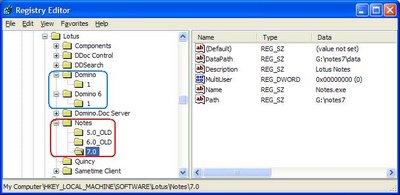
In order to enable R7 to install after R6, I had to experiment for a while, eventually going to the
\HKEY_LOCAL_MACHINE\SOFTWARE\Lotus\Notes section of the registry and renaming the folder labelled "6.0" to anything different (I chose the name "6.0_OLD"), after which R7 installed without any further complaints.
After all that, Notes Client and Domino Designer R6.5.4 seems still to work okay. Any comments/suggestions?
UPDATE - 08 January 2007:
I have installed multiple releases once again, on a new desktop system, and this time took the opportunity to document the above procedure more carefully, so you should refer to the following more recent post: Steps for installing multiple Notes/Domino releases on a single systemAN ASIDE:If like me you're the only user of Notes on your system, you can try editing the
MultiUser doubleword entry, setting it to zero in order to eliminate some minor issues/complications related to this feature.
UPDATE 1:There's another article on this topic, over at the
Lotus Notes FAQ website:
Can you keep multiple versions of Notes on the same system? (Note: this older article describes work done with Notes R4 and R5, and the author mentions at the end "I have not had the opportunity yet to try out this procedure involving ND6.")
UPDATE 2:Here's a tip for installing multiple Notes releases using
Citrix AIE (Application Isolation Environment) ...
Lotus notes installation in Application Isolation modeUPDATE 3:Wolcott Group's
Configuration Manager for Lotus Notes may help in this too. "Easily manage the contents of multiple Lotus Notes configuration files on a single system" they say. "Developers typically install multiple versions of the Lotus Notes client on their computer systems so they can develop and test applications on multiple clients. There are often times where a developer will want to review the configuration of the different versions or even compare individual parameters between versions. For developers, CM is most useful when you need to verify (view or set) parameters that were modified by an application or process being tested. Administrators and help desk personnel need to be able to view the differences between a configuration that works properly vs. one that does not." (I've never seen their CM in action, so can't vouch for it one way or the other.)
The December 2006 issue (Volume 45 no 4) is focused on Business Collaboration, which is the focus of the Workplace Portal and Collaborative (WPLC) software division. WPLC is responsible for all Lotus branded products as well as WebSphere Portal. A common theme in several papers in this issue is activity-based collaboration, which is an important research focus for continued development. You can learn more about activity-based collaboration in this exciting issue of the IBM Systems Journal:
